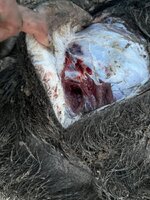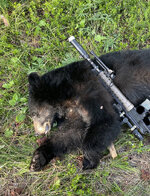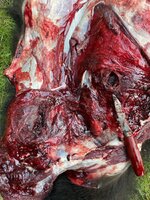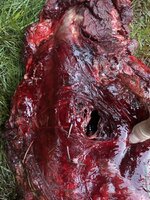His results showed that the mono made 1.5-2" diameter wounds while the TMK made wounds twice that diameter. That is a gigantic difference in tissue disruption, not to mention that the difference would be even more drastic at further ranges or in shorter barrels. Of course a 1.5" hole in an animal's vitals will take it down, but not as quickly or as effectively as a 3-4" hole will.Yet RiffRaff (and others) provided clear evidence that they work and work well?? Have you ever used them??
The distance an animal runs is only half the story - down doesn't mean dead. Assuming shot placement is identical, the time it takes for the animal to actually succumb to its wounds and bleed out directly correlates with wound channel size.
*The rest of this comment isn't necessarily directed towards you, but to anyone wondering WHY high weight retention monos or bonded bullets are inferior to bullets like TMK.
When it comes to ethical kills with a .223 (or any rifle caliber really), fragmentation is your friend. I'm not sure if this has been touched on in the thread, but there is a very simple reason why fragmentation as seen in bullets like TMK and AMAX/ELD-M does far more damage than mere expansion. It's not just because fragments make a bunch of tiny wound channels, as some like to believe.
We all know that rifle bullets make a significant temporary cavity above a certain velocity. What fragmentation does is weaken the structural integrity of the tissue and make it MUCH easier to tear. Think about tearing an intact piece of paper or a rubber band vs one with a bunch of little holes in it. That's why bullets like the TMK are as effective as they are. Fragmentation helps ensure that the temporary cavity becomes essentially permanent. Not the case with weight retaining monolithics.
Like Formidilosus said, this thread would have a VERY different tone if the main bullet in question was the barnes TSX and not the 77gr TMK.
Last edited:







